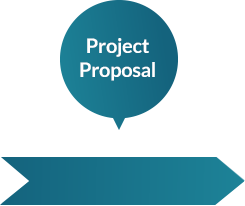Translational Strategies for Cardiovascular Repair and Regeneration
Grant Project Details:
Grant Location
Grant Description
Cardiovascular disease in the number one cause of death worldwide and it is the most common cause of death in the United States. This grant proposal is focused on novel regulators of cardiomyocyte proliferation and provides a platform for translational medicine in large animals during cardiac repair and regeneration. The aim of this grant proposal is to decipher the pathways and the mechanisms that govern adult cardiomyocyte proliferation and identify potential therapeutic targets to promote heart regeneration in vivo. This will serve as an important platform for the mechanistic as well as translational understanding of cardiac regeneration and will have a significant impact for the field of regenerative medicine. The studies in the injured pig heart are intended as a preclinical, translational initiative. Our published and preliminary data uses established state-of-the-art technologies to provide a platform for our proposed studies. We believe that the proposed studies will revolutionize cardiovascular care and ultimately lead to a cure for cardiovascular disease and have a tremendous impact on our society.
Research Focus: Cardiovascular disease
Cardiovascular disease is the leading cause of mortality in the United States and worldwide, with coronary heart disease comprising the largest portion of deaths. Repair of the damaged heart poses a unique challenge to the field of regenerative medicine because of its very limited capacity for self-renewal. The long-range goal and the clinical significance of this project are its focus on novel regulators of cardiomyocyte proliferation and their impact on cardiac repair and regeneration. To date, we have made significant advancements towards identifying a new network operation in the cardiomyocytes and the achievements are listed; i) defined the molecular blueprint of the isolated cardiomyocyte at two stages, namely P1 (regenerative stage) and P56 (non-regenerative); ii) Identified role of Gli2 in the cell cycle and cardiac morphogenesis; iii) Identified Gtf2ird1 as a novel downstream target of Gli2 in the cardiomyocytes. Overall, these studies led to the understanding the molecular regulation and deciphering mechanistic details of Gli2-regulated expression of Gtf2ird1 (a novel factor) in the cardiomyocytes. These results pave the way to modulate these pathways in the promotion of cardiomyocyte proliferation and heart regeneration. Indeed, a future step is to translate these findings into a translational approach. Further studies will be needed to design and test the efficacy of small molecule activators and inhibitors of Gli2 as well as Gtf2ird1 to modulate mammalian heart regeneration and therapeutic repair.
Grant Awardee Biography



